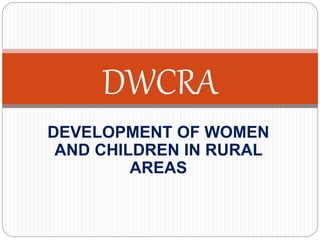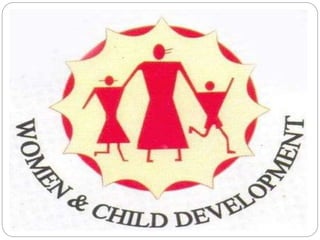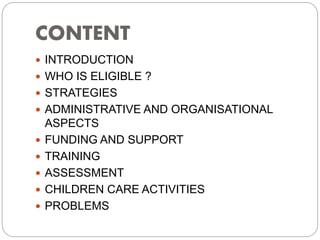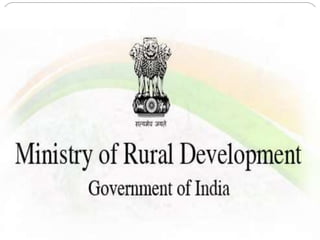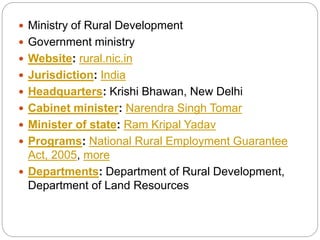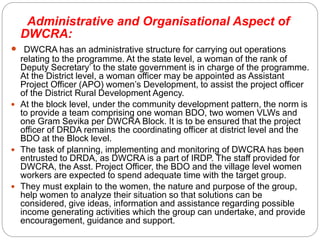The document discusses the Development of Women and Children in Rural Areas (DWCRA) program in India. Key points:
- DWCRA aims to improve living conditions for rural women and children through self-employment opportunities and access to social services like healthcare, education, and childcare.
- Eligible groups are formed of rural women below the poverty line. They receive a revolving fund of Rs. 25,000 for income generation activities.
- The program strategy includes skill and credit support so groups can supplement their incomes. It encourages collective action, thrift, and makes women self-reliant.
- Administrative roles include officers at the state, district, and block levels to plan, implement and
